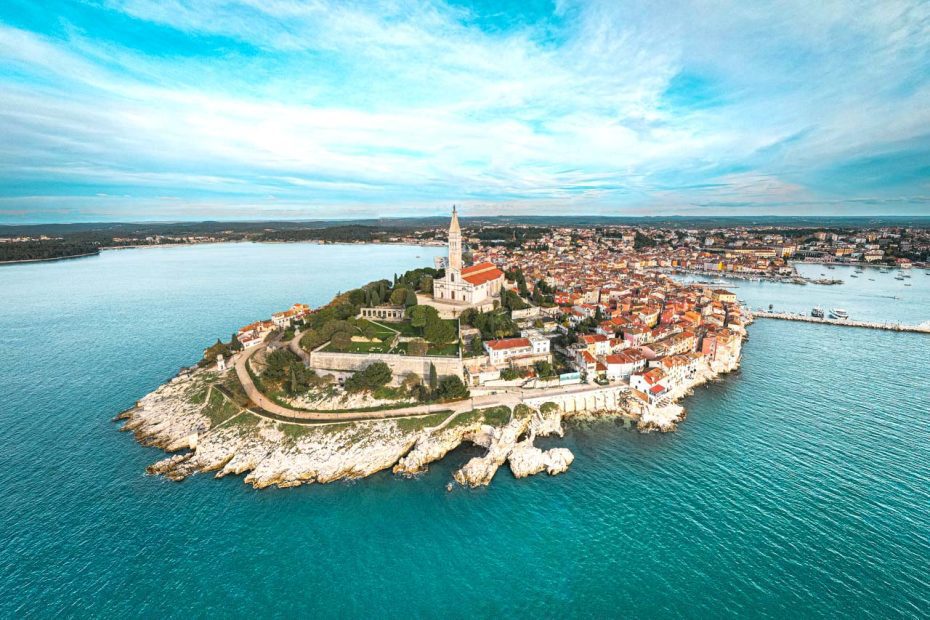Wondering about the best things to do in Istria and whether it’s worth giving this lesser-known part of Croatia a chance?
If you love places that don’t shout but rather invite you to explore at your own pace – Istria might be like a peaceful breath for you.
It’s the largest peninsula on the Adriatic, scented with figs, wine, and sun-warmed stone.
You’ll find towns that look like postcards, beaches with turquoise water, truffle-covered hills, and in the evenings – sunsets that stay in your memory.
In this guide, I’ll tell you about 10 places that moved me the most. If you’re looking for inspiration on what to see in Istria – and want to feel something more than just a view – you’re in the right place.
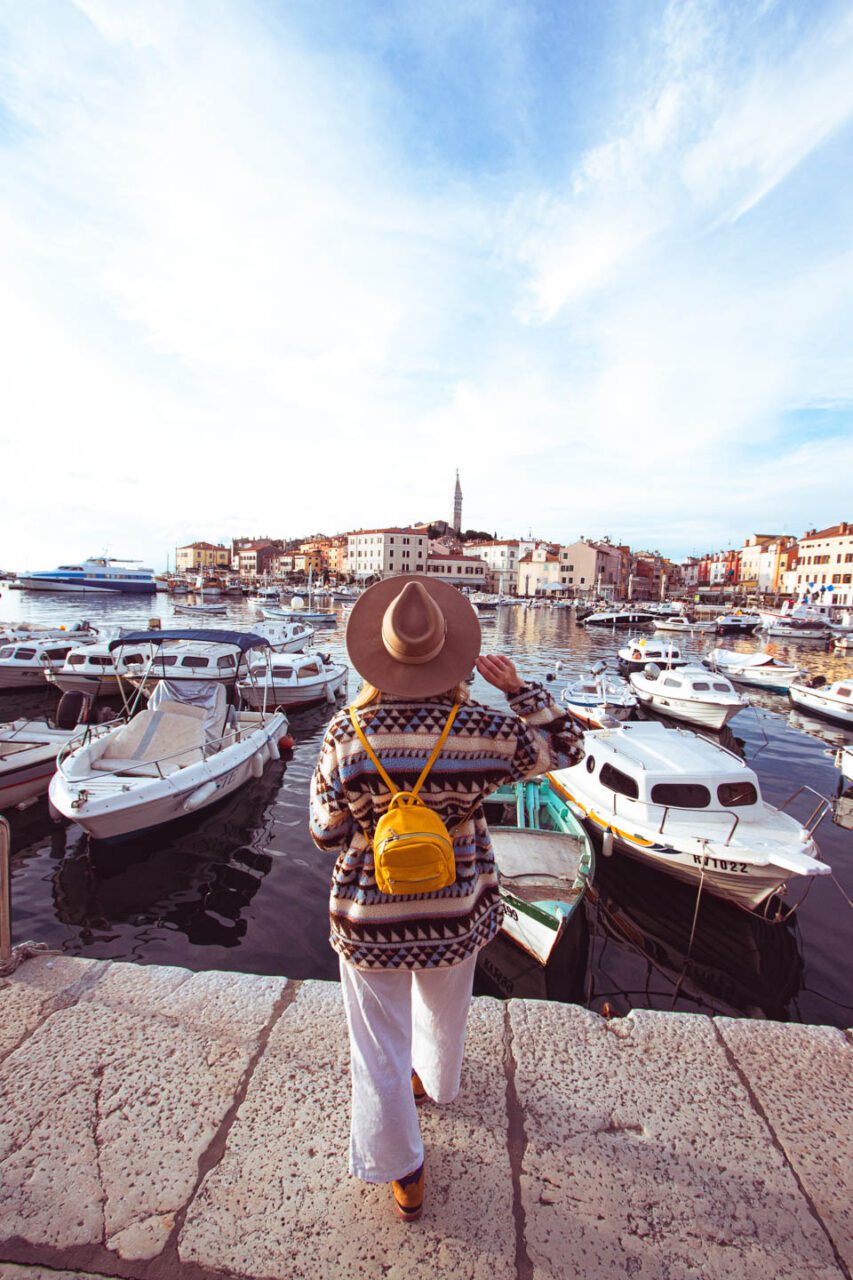
Map of Istria’s Top Attractions
1. Rovinj – A Colorful Dream on the Adriatic
I first saw Rovinj just before sunset. The town looked like watercolor – pastel houses reflected in the water, and narrow streets smelled of salt and wine.
It’s one of those places where you slow down instinctively. You walk down a cobblestone street, suddenly a view of the sea opens up, and you catch yourself breathing deeper.
Rovinj is considered the most beautiful city in Croatia – and it’s really hard to disagree. The Old Town feels like a dream from another era.
It’s worth getting lost there, climbing up to the Church of St. Euphemia, sitting in a cafe overlooking the harbor and just… being.
If you want to see Rovinj from above – look for viewpoints or plan a drone flight. From that perspective, it looks even more unreal.
Along the way, you can spot St. Benedict’s Gate, the Portico, St. Cross Gate, or the Venetian town clock – but in Rovinj, the list of attractions isn’t what matters most.
It’s about the atmosphere, light, scents. About the feeling that for a moment you’ve transported to another world.
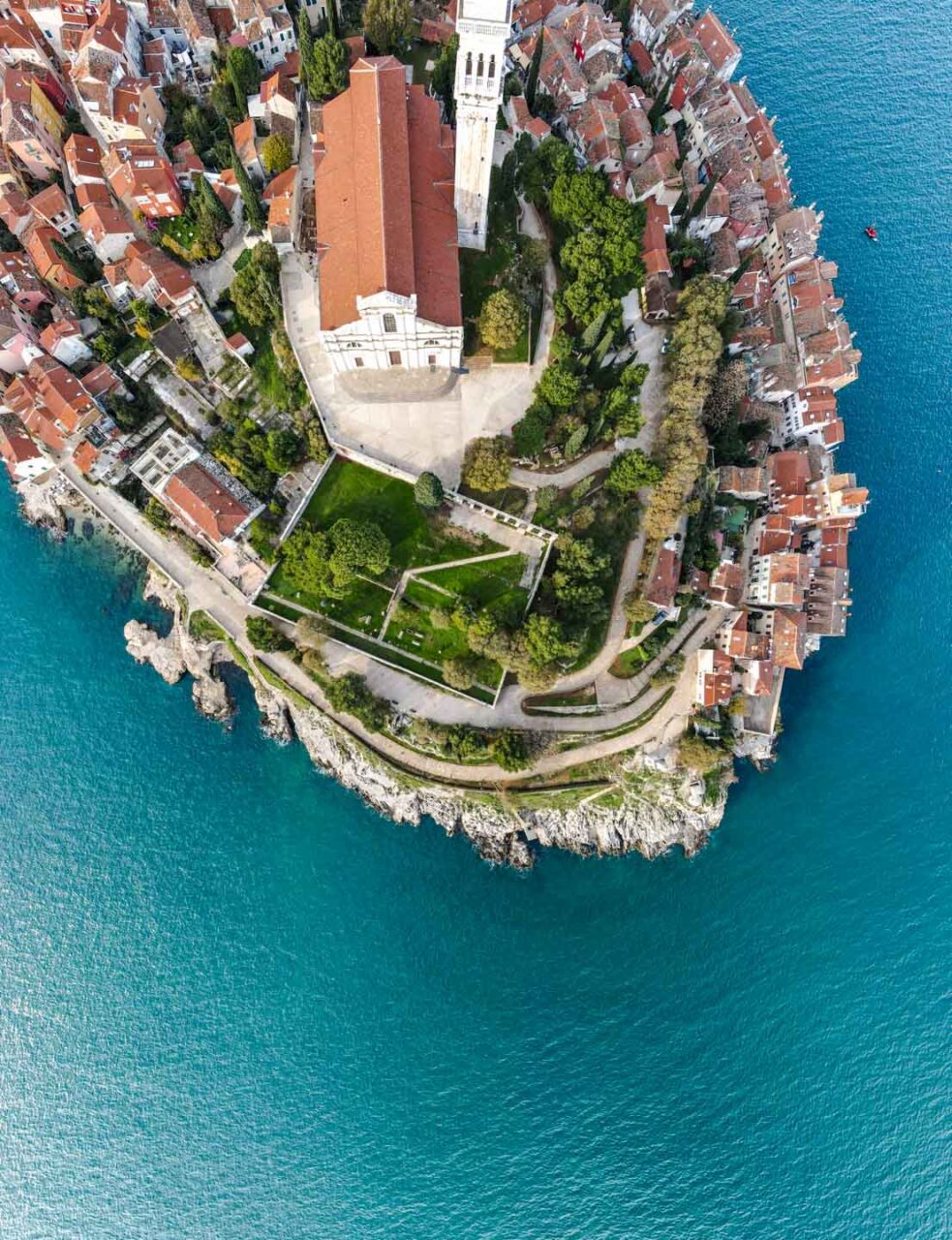
2. Girandella – A Beach That Shimmers with Turquoise
Girandella is one of those places where the water really has the color of dreams.
The turquoise glistens here like glass, pebbles are white as salt, and the light reflects off everything so much that it’s hard to believe it’s not a filter.
The beach is located in Rabac – a small fishing village on the eastern coast of Istria. I came here without great expectations and stayed longer than I planned. Because how do you move from a place where everything calls: “Stay a little longer”?
You can rent a beach chair, order something cold at the bar on the cliff, or just dip your feet in the water and watch. Or not watch – just be.
For the more active – there’s a diving school. For those who prefer quiet – one of the coves is enough, preferably early in the morning, before the sun warms the stones.
Girandella doesn’t need advertising. It’s enough that you stand there. And feel that you’re exactly where you should be.
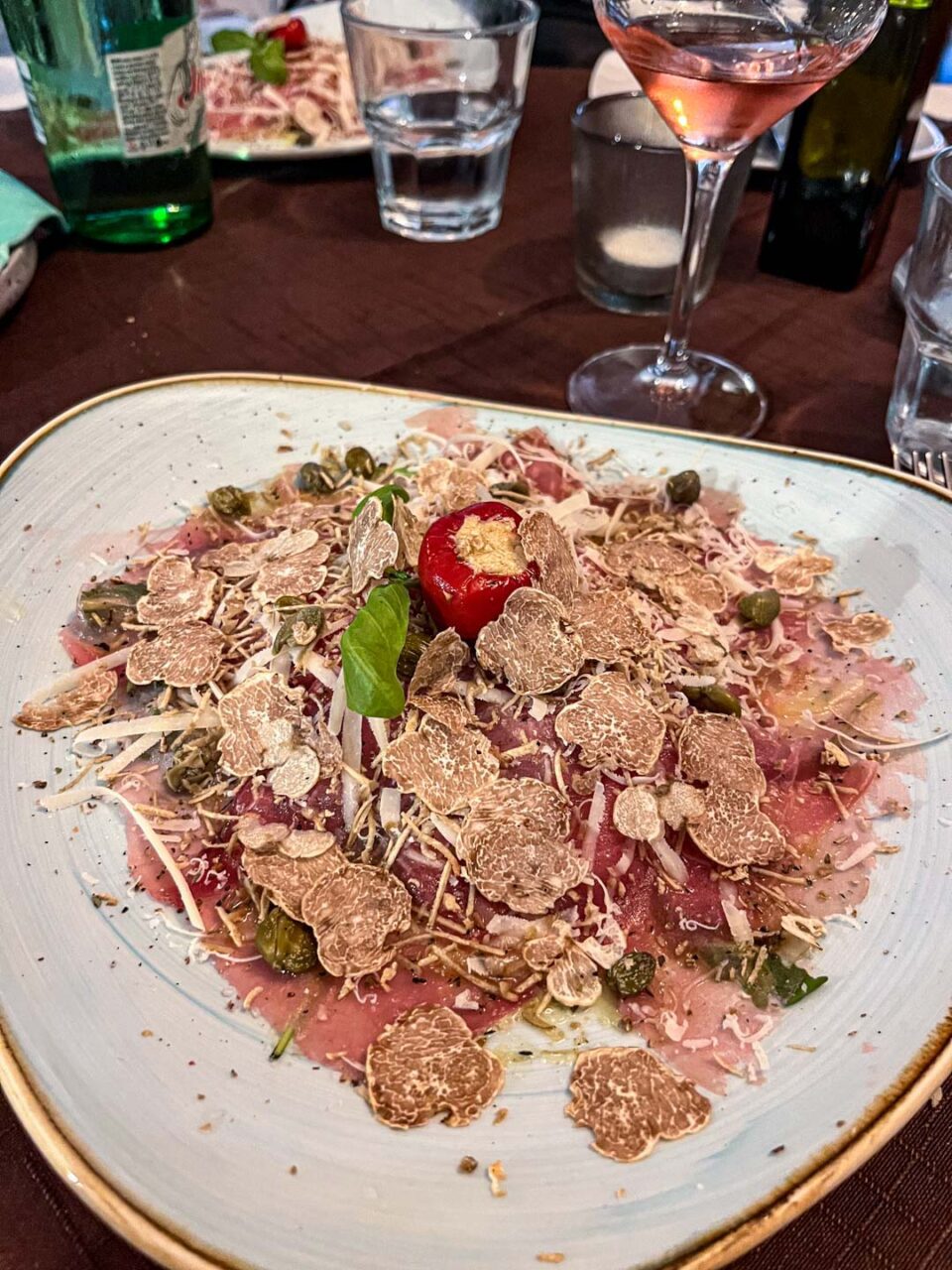
3. Motovun – Truffle Hills and the Taste of Autumn
You arrive at Motovun a bit like entering a story – by a winding road through green hills, with views reminiscent of Tuscany.
But it’s here, in the heart of Istria, that the world’s most famous truffles grow. And the whole area smells of them.
In autumn, the air is humid and heavy with scents – earth, forest, mushrooms. It was here, in 1999, that the largest white truffle in history was found. And although that’s just a curiosity, Motovun doesn’t need records to enchant.
Walking through its cobblestone streets, I felt as if time had slowed down. At Konoba Mondo tavern, I ordered pasta with truffles and wine from a local vineyard – and it was one of those meals you remember for years.
Every year in October, a white truffle festival is held here. But even if you come off-season, Motovun can nourish you – with taste, silence, a view that spreads over your soul like warm light.
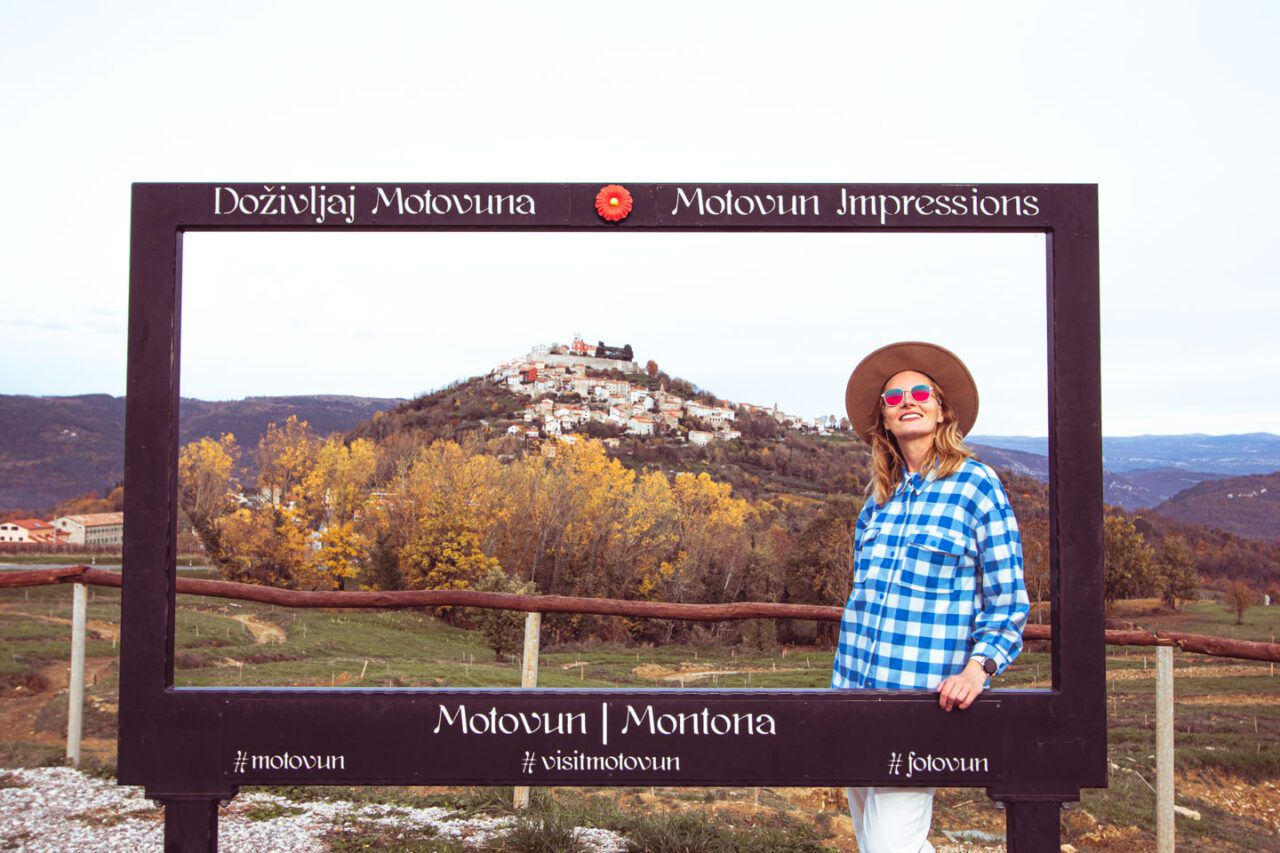
4. Hum – The Smallest City in the World and Silence That Sounds Different
Hum has fewer than 30 residents, yet it has city rights. And a soul bigger than many crowded resorts.
When we arrived there, the air smelled of sage and sun-warmed earth.
The town sits on a hill – stone houses, a cobblestone street, and peace that wraps around you like a soft blanket. You don’t need much: a moment of silence, a cup of coffee, and the feeling that time really has stopped here.
Walking between the walls, it’s easy to feel like you’re in a sleepy corner of Tuscany, but without people with selfie sticks.
You can peek into the Church of the Assumption, see frescoes in St. Jerome’s Chapel, stand by the bell tower – or just sit on a stone and watch.
If you arrive in June, you might see the mayor election ritual – a tradition as old as the walls that surround it.
Hum doesn’t enchant with the number of attractions. But if you need a moment of silence and a reminder that small things can be great – this is the place.
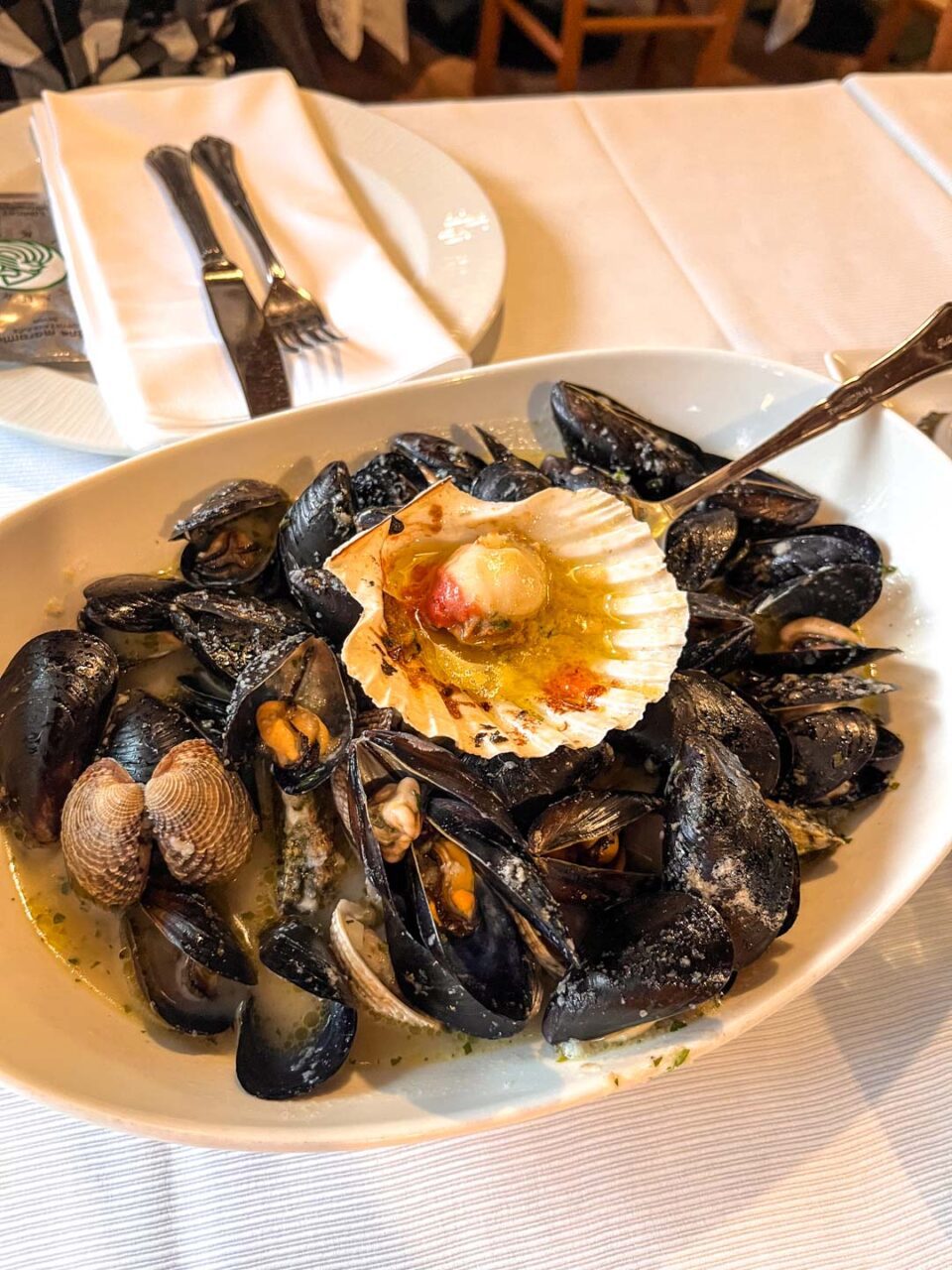
5. Poreč – Mosaics That Have Been Silent for Centuries
Poreč was like a calm breath for me after days full of sunshine and truffle scents. A quiet town with an elegant old town and light that falls through stone arcades in the morning.
But it was the Euphrasian Basilica that stole my attention – and for a moment everything else stopped mattering.
If you love places that have history in them but don’t flaunt it at every turn – you’ll feel it here. Upon entering, I had the feeling that time had stopped a thousand years ago.
Byzantine mosaics shine as if they had just been finished. And yet they emanate peace. And light – golden, soft, leading the eye upward.
The basilica was inscribed on the UNESCO list – but what was more important to me was what I felt, standing there in silence. A tower rises above the town – it’s worth climbing up to see Poreč from the perspective of bells and roofs.
After sightseeing, you can stroll along the seaside promenade, discover Gothic facades, or just sit with ice cream and watch the sun slowly descend.
And if you long for the big world – from the port you can take a ferry to Venice. Three hours – and you’re on the other side of the Adriatic.
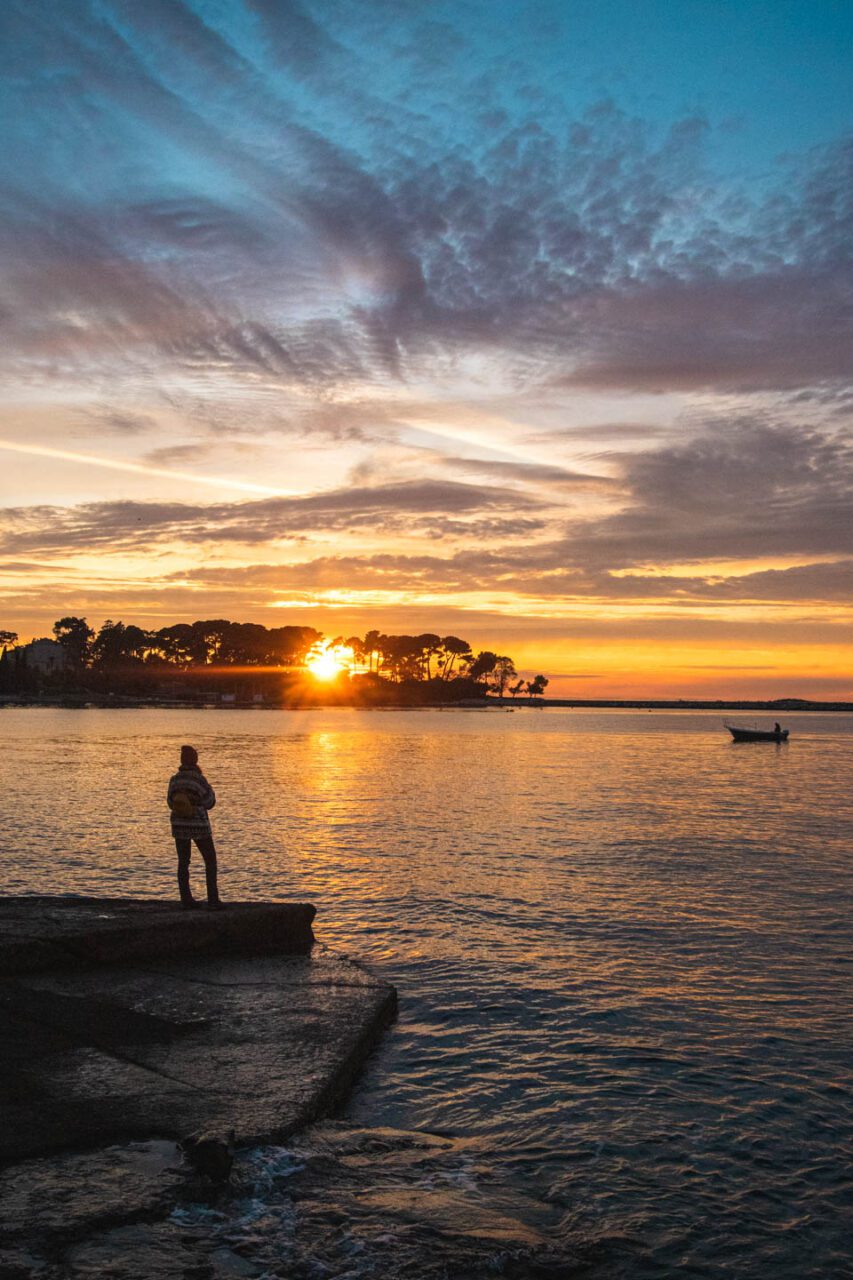
6. Vrsar – Sunset Hill and Casanova’s Spirit
I went to Vrsar without a plan, partly out of curiosity, partly out of need for the moment. And I stayed – because sometimes one view is enough for something in you to soften.
The town sits on a hill from which a panorama of the Adriatic unfolds so peacefully that you don’t know whether you’re looking or dreaming.
Stone streets wind upward between whitewashed facades, and the sea peeks out from every turn. In the evening, everything here takes on a golden color – walls, stairs, even the air.
It was Vrsar that Casanova favored. Supposedly he returned here several times and left more than one mention in his memoirs.
Today his sculpture stands on one of the streets – somewhat ironic, somewhat romantic, somewhat theatrical. But it works. Because Vrsar has something of a story in it.
Every year the Casanovafest is held here – a festival of literature, film, and music. But even without events, the town can play its own melody – quiet, peaceful, somewhat suspended in time.
The perfect place to sit in the evening on a wall with a glass of local wine and watch the sun slowly disappear beyond the horizon.
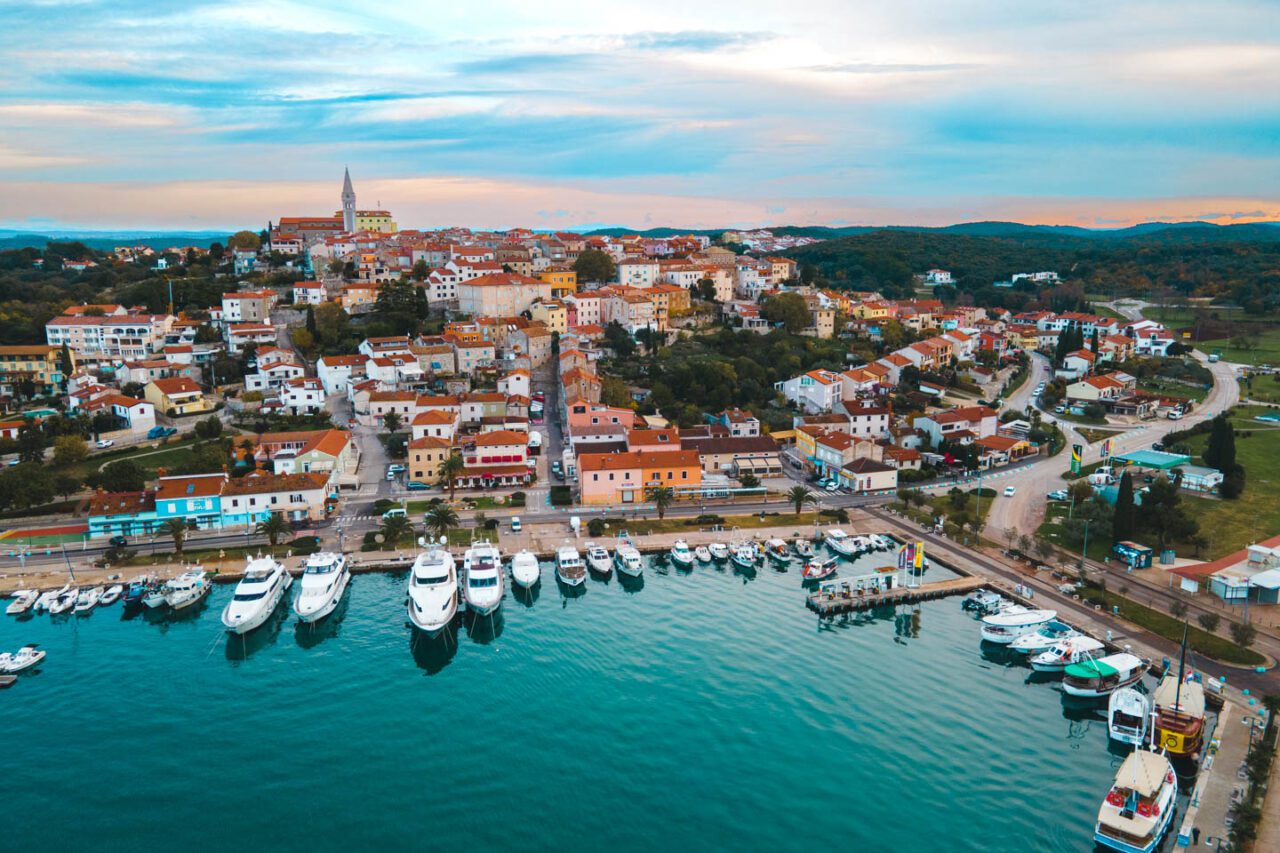
7. Pula – Where Stones Remember More Than We Do
Pula has something raw about it – it’s a city with a history that doesn’t need embellishments. It’s not pastel like Rovinj, it doesn’t smell of truffles like Motovun.
But when you stand in front of the Roman amphitheater, you get chills.
This structure really makes an impression. Not just because of its size, but because it survived. It stayed. And it still endures, even though the world around it has completely changed.
Built first of wood, then of limestone, it could hold 23 thousand people. Gladiators, Roman audience, dust, shouts – it all suddenly seems quite close.
Today concerts are held in the amphitheater. Elton John, Pavarotti, Bocelli – yes, they all sang here. But I remembered it in silence. Empty, in afternoon light, with a shadow circling the arena. As if the stones were breathing.
Pula isn’t the most romantic in Istria. But it’s real. And it reminds you that beauty has many faces – some of them are cracked, powerful, and deeply rooted in time.
How do you want to continue Europe adventure?
🇮🇹 Fell in love with hilltop towns? → 10 Most Beautiful Towns to See in Tuscany
🇪🇸 Drawn to Spain? → 10 Must-See Places in Catalonia (Beyond Barcelona)
🇵🇹 Dream of Portuguese Tuscany? → Why You’ll Fall for Comporta – 10 Soulful Reasons
What speaks to you the most?
8. Lim Channel – Silence, Oysters, and Light Like in a Movie
Lim Channel looks like it doesn’t fit with the rest of Istria – it resembles a fjord, except with the scent of herbs and southern sun. A narrow, green corridor stretches between hills and reflects the sky like a mirror.
No wonder Viking films were shot here – this place has something of fairy tale and adventure at the same time.
But what really stopped me here was the taste.
Thanks to unique conditions – brackish water and high oxygen levels – the channel became an ideal environment for oysters, mussels, and fish.
Right by the shore stands the Viking restaurant, where I ate the simplest and most delicious plate of seafood. Oysters tasted of the sea here – not just its salt, but its peace.
Yes, prices are touristy. But sometimes it’s worth paying for a moment of absolute stillness – with a glass of white wine, a view of the water, and silence that tastes like bliss.
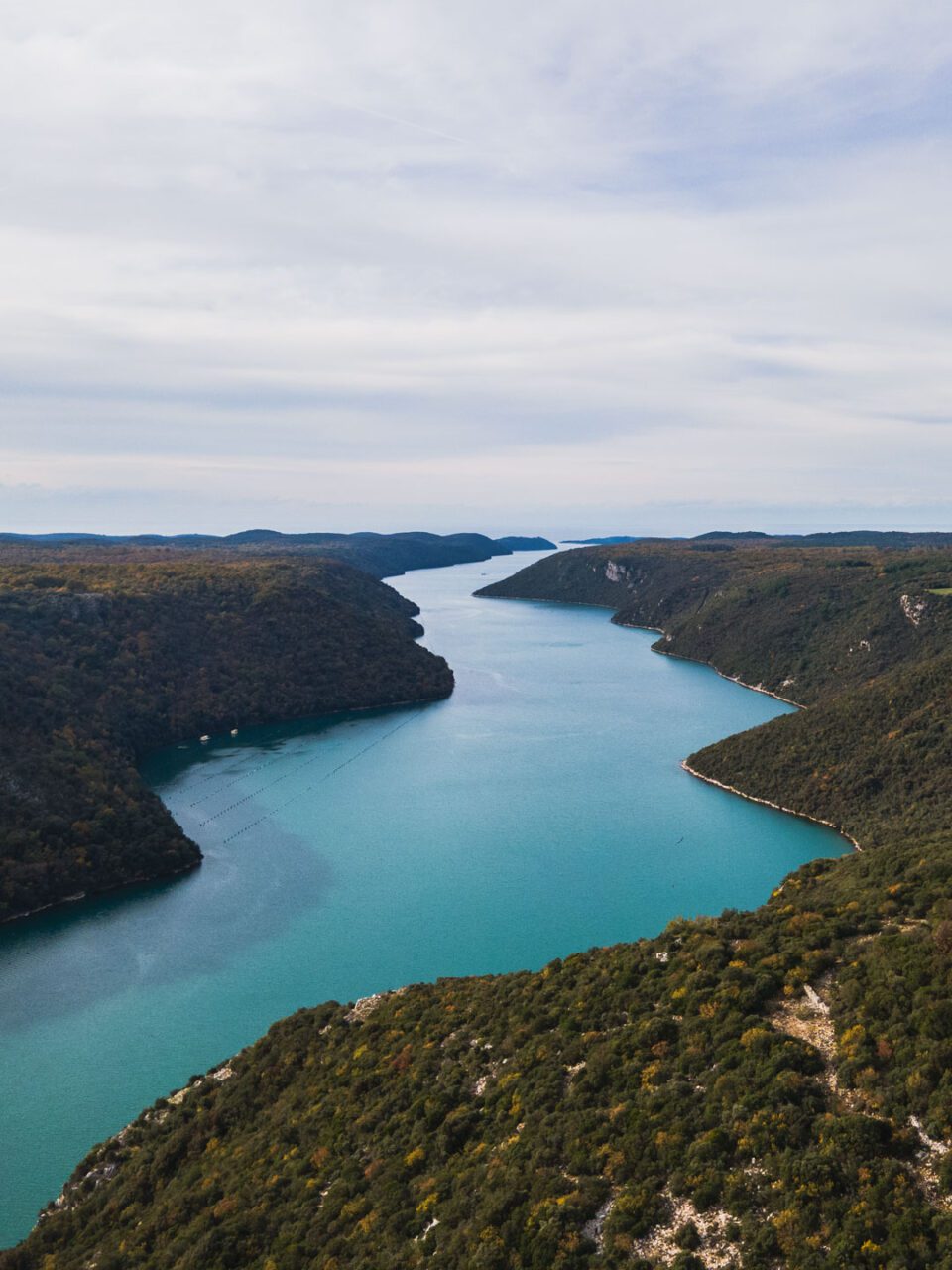
9. Brijuni Islands – Silence, History, and Footprints from Centuries Ago
The Brijuni archipelago is a place that surprises. Not with crowds, not with noise – but with peace that settles somewhere deep under your skin.
From Fažana you board a ferry, and a few minutes later you’re already on another planet – surrounded by blue water, scented with pine and salt.
The largest island, Veliki Brijun, is a microcosm of nature and history: Roman ruins, exotic animals, tree-lined avenues older than my entire travel list.
On Mali Brijun it’s even quieter. Old fortifications, Ulysses Theater that comes alive in summer like an enchanted garden – and beyond that only wind and stones that have been silent for hundreds of years.
There are also smaller islands, like Sveti Jerolim, with a beach perfect for an all-day reset – with a book, wine, and doing nothing.
And if you feel like taking a walk through time, check out the Archaeological Museum – it’s the kind of place where stones tell stories.
Admission to Brijuni is paid, but worth every euro. Not just for the views – for the feeling that you’re on an island that really gives you space.
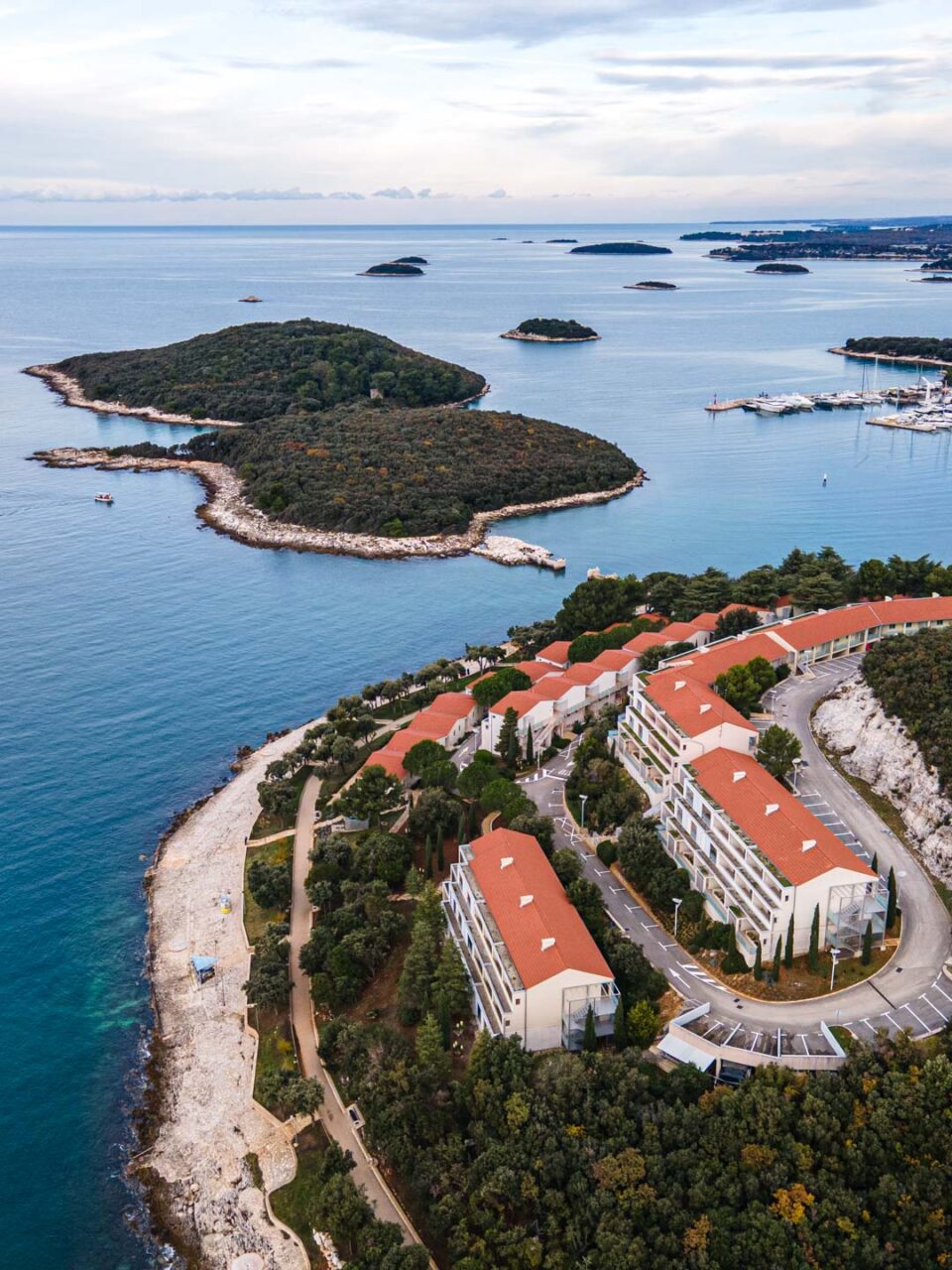
10. Istrian Vineyards – The Taste of Earth That Stays With You Longer
If I had to describe Istria with one image, it would be a glass of Malvazija at sunset, with a view of vines and warm light filtering through the leaves.
Istria isn’t just truffles and hilltop towns – it’s also land that has been producing wine for centuries.
The Greeks brought the first vines here back in the 6th century BC, but what you’ll find in local vineyards today is the result of hundreds of years of stories written in bushes, soil, and air.
The best known is Malvazija Istarska – white, fresh, fruity wine that tastes of summer, even if you drink it in autumn. Red varieties, such as Teran or Refošk, have more earth, weight, depth in them.
I recommend visiting places like Kozlović Winery, Stancija Collis, or Cattunar – not just for tasting, but also to feel the rhythm of the region.
Tasting 4-6 glasses costs about 25-33 euros, but it’s not just about quantity – it’s about how long that taste stays with you.
Because in Istria you drink slowly. You talk long. And you remember – not just the taste, but the whole moment.
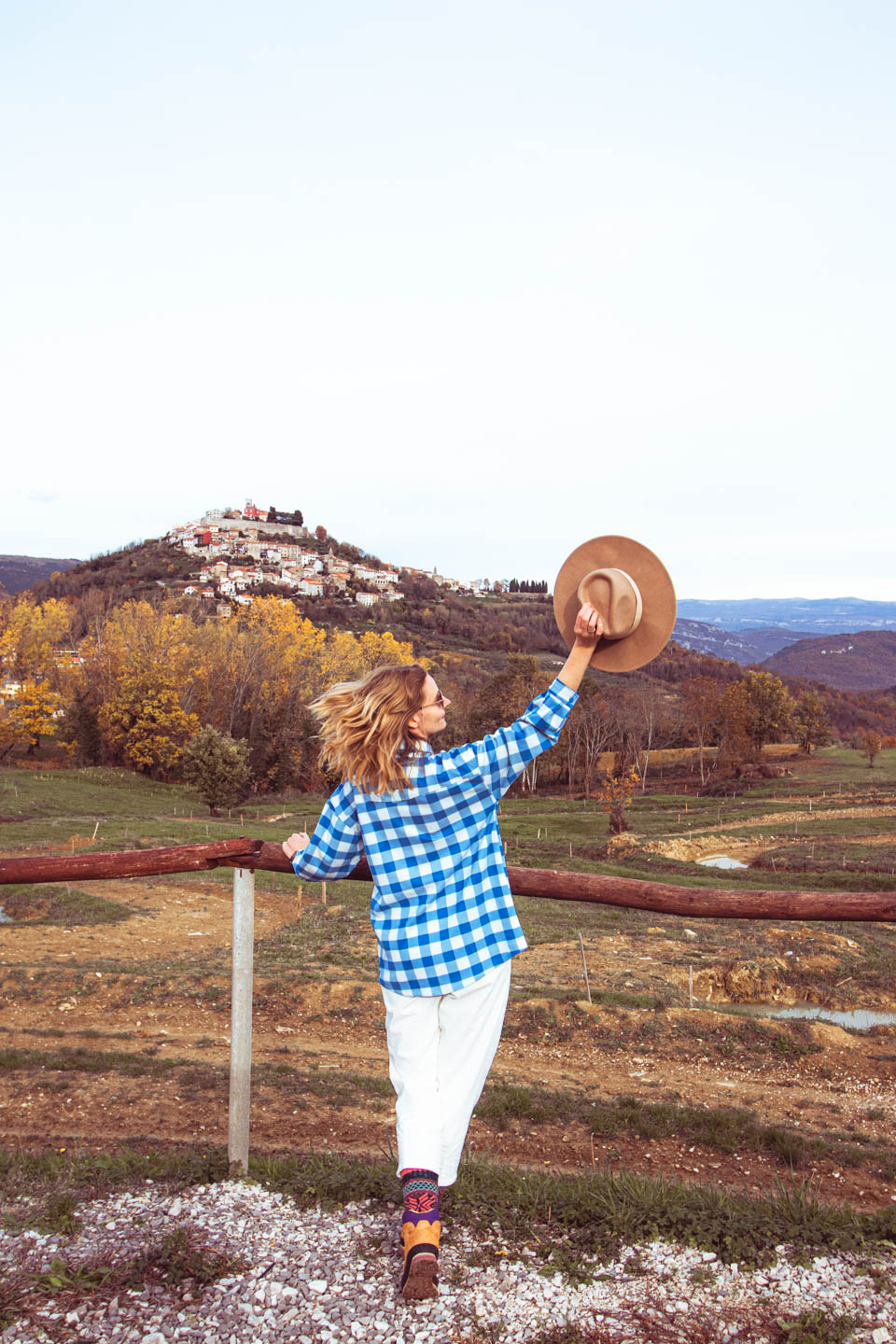
Travel Budget Calculator
Get your free Travel Budget Calculator now and plan your trip without the stress of overspending!
Things to Do in Istria – A Place You Feel With Your Whole Self
If you’re still wondering about the best things to do in Istria, the answer doesn’t come down to a list of attractions.
This Croatian peninsula is more than points on a map – it’s the scent of figs, the taste of homemade wine, and light that paints everything gold in the evening.
In Istria you’ll find places that feed the senses – from medieval towns, through truffle hills and intimate beaches, to islands where silence says more than a guide.
Plus cuisine that doesn’t pretend to be anything and wine that smells of earth.
You don’t have to check off everything. Sometimes one place that stirs something inside is enough – and that will be your answer to the question of what’s worth doing in Istria.
I remember how on the first evening in Rovinj I sat with a glass of Malvazija, watching the sunset over the Adriatic.
And I thought: “This is exactly what I was longing for.” Not for a spectacular view, not for noisy entertainment – but for a place that lets me breathe deeply.
Istria gives exactly that – space, peace, and the feeling that you’re exactly where you should be.
Ready to discover more European gems?
- Tuscany’s Hilltop Towns – If you loved Istria, you’ll feel right at home here.
- Porto Essentials – A soulful city made for slow, mindful travel.
- Beyond Barcelona – Catalonia’s quiet side, full of hidden gems.
- Comporta, Portugal – Barefoot, salty, and beautifully slow.
And if you’ve already been there – share in the comments. What stayed with you longer?
Save this pin and share it with people who need inspiration for their next trip!
